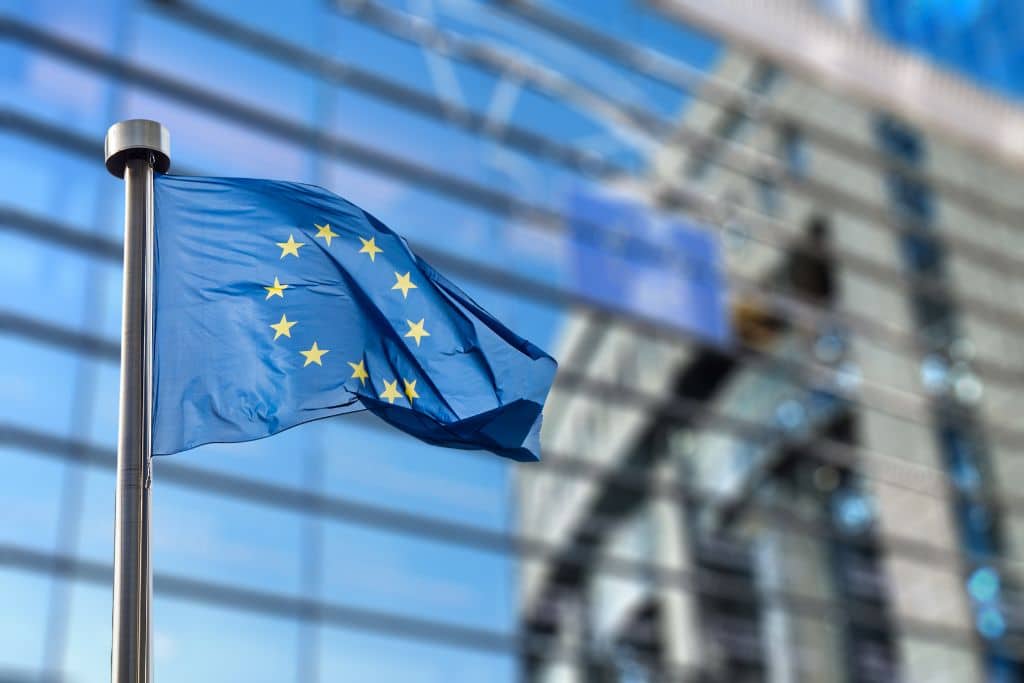In December 2023, the European Union (EU) announced new rules to crack down on the fashion industry, the third most polluting industry in the world. The 27-nation bloc has been a frontrunner in efforts to transition from fast fashion to a circular model. In 2022, the bloc introduced a Strategy for Sustainable and Circular Textiles, which is now gradually incorporated into new (and existing) regulations that should enter into force by 2030. This article looks at five main takeaways from this new textile strategy.
—
On December 5, 2023, the European Union (EU) announced new rules to tackle environmental challenges caused by the fashion industry – the world’s third most polluting industry after fossil fuels and agriculture. The industry emits 10% of the world’s total annual carbon emissions and is expected to emit a quarter of global emissions by 2050.
The main culprit behind this is overconsumption. Due to the increasing popularity of cheap, yet low-quality fashion products from large fast fashion chains such as Shein, Primark, Forever21, Uniqlo, Zara, and H&M, global consumption of apparel almost doubled between 2000 and 2015 and is expected to reach a staggering 102 million tons in 2030.
The Environmental Impact of Fast Fashion
Fast fashion has a detrimental impact on the environment in various ways. The fashion industry is the second-largest consumer of water. Indeed, current textile dyeing and treatment procedures require approximately 93 billion cubic meters of water annually – enough water for five million people. These processes also account for 20% of global wastewater.
What’s more, the industry generates huge amounts of waste. The number of times people wear a piece of clothing decreased by more than a third to an average of seven in the past 15 years, a factor that contributes to the staggering 92 million tonnes of textile waste generated worldwide every year. Less than 1% of used garments is recycled into new clothing, while 87% of clothing fibres are incinerated or end up in a landfill – the equivalent of a garbage truck full of clothes being burned or dumped every second. Common clothing landfills are in Accra (Ghana), Panipat (India) and the Atacama desert (Chile), where textiles can take up to 200 years to decompose.
Furthermore, synthetic fabrics (made of plastic) shed plastic fibres every time they are washed, with the majority ending up in the ocean. Around 60% of clothing and 70% of household textiles are believed to contain plastic. As a result, an estimated half a million tonnes of plastic fibres are released into the ocean annually, the equivalent of 50 billion plastic bottles. These microfibers are spreading through the food chain, threatening animals’ and humans’ health.
You might also like: Are Microplastics Harmful And How Can We Avoid Them?

The entire fashion supply chain is not only dispersed, but also lacks transparency. Large fast fashion chains have completely outsourced the manufacturing process to textile factories in China and Bangladesh, where labour and production costs are very cheap. As there has been little oversight from apparel companies on the production processes and the working conditions of the primarily female textile workers in these far-away factories, environmental and human rights issues in the manufacturing industry of textiles have long been overlooked.
You might also like: The Danger of Sweatshops
The EU Strategy For Sustainable and Circular Textiles
The EU has been at the forefront of addressing these challenges and advocating for a shift from fast fashion to circular fashion through a series of comprehensive policies.
The 2022 EU Strategy for Sustainable and Circular Textiles forms the cornerstone of these endeavours. It is part of a larger effort from the 27-nation bloc to establish a circular economy within all industries, reach climate neutrality by 2050, and implement the commitments made under the 2019 European Green Deal, the 2020 new Circular Economy Action Plan (CEAP) and the Industrial Strategy for the fashion industry.
The new strategy unveils new, binding regulations – or updates to existing regulations – for its member states and companies doing business in or with the bloc that will be enforced within a few years. But what exactly does this mean for EU consumers?
1. Consumers will have more opportunities to buy sustainable clothing
Under the Eco-design for Sustainable Products Regulation (ESPR), new, binding eco-design requirements for textiles are set out. These requirements aim to extend the lifetime of clothing, by stimulating companies to become more circular, making materials more durable or recyclable, using waterless dyeing methods, using waste as a raw material for fabrics, bringing less collections to the market, and offering consumers repair services or second-hand collections.
The EU will also offer companies economic incentives to make products more sustainable, primarily through eco-modulation: lowering fees for brands that offer eco-friendly products, while raising fees for brands with less eco-friendly products. Sustainable companies will be able to opt for subsidies or tax reductions, while research, innovation, and investments in circular fashion are supported through tenders, loans, and grants by the EU and its member states. As a result, consumers will have more opportunities to buy affordable sustainable clothing.
You might also like: How Repairing Clothes Slows Down Climate Change
2. Consumers’ returned or disposed clothing will not end up in a general landfill in a far-way country anymore
To boost reuse and recycling of textile waste, the EU introduced the Extended producer responsibility (EPR) for textiles, which will be enforced on its member states by 1 January 2025. Fashion brands and retailers will become fully responsible for the entire lifecycle of textiles. The EPR will include a ban on the destruction of unsold or returned textiles and the obligation to separate the collection of textile waste from other types of waste.
The EU’s Waste Framework Directive will be updated to halt the export of textile waste. Textile waste to non-OECD countries will only be allowed under certain strict conditions. To prevent textile waste from being falsely labelled as second-hand products when exported, the EU will also set out more specific disposal criteria.
3. Consumer’s clothes will shed less microplastics
Rules on manufacturing processes were introduced to prevent the unintentional shedding of microplastics from textiles, which may include regulations for product design, pre-washing, and innovative products such as built-in washing machine filters or new wastewater treatment procedures.
4. Consumer will have more information about the origin and sustainability of their textile products
A new, mandatory digital product passport that includes circular and environmental requirements was introduced to ensure transparency, fairness, and credibility across the entire textile supply chain. Apparel companies need to provide accessible information about the durability, reparability, recycled content, and materials used to allow consumers to make smart purchases. This information will need to be included either in the physical or in the digital label.
Transparency and fairness is now also ensured by the upcoming Corporate Sustainability Due Diligence Directive, a separate EU initiative that affects more than just the fashion industry and aims to foster sustainable, responsible, and transparent corporate behaviour across global supply chains. Companies will be required to meet due diligence obligations to identify, prevent, mitigate, or end the negative impact of their activities and their supply chain on human rights and the environment. This directive is likely to come into force in 2025 and will not apply to large EU-companies as well as non-EU companies active in the bloc. In case of non-compliance, member states may impose fines and victims can take legal action.
5. Consumers will be less likely to be fooled by deceptive greenwashing campaigns from fast fashion chains
Stricter rules against greenwashing are imposed under the Green Claims Initiative, which prohibits the use of general claims such as ‘green’, ‘eco-friendly’ or ‘good for the environment’ unless backed by a recognised EU eco-label or official authority.
As the world grapples with the implications of overconsumption and excessive waste, the EU stands out as a trailblazer, proactively presenting its new textile strategy as a beacon of hope. With clear policies and regulations to realise circularity in the entire textile supply chain, the EU is addressing the environmental challenges arising on both the demand and the supply side of the industry.
With a supply chain scattered across the world and the EU being an important market for many international companies, it is likely that the effect of these pioneering regulations will have positive effects on the global fashion industry. While the journey is far from over, the EU’s initiatives give hope that a future where fast fashion is out of fashion is possible.
You might also like: Fast Fashion and Its Environmental Impact


















